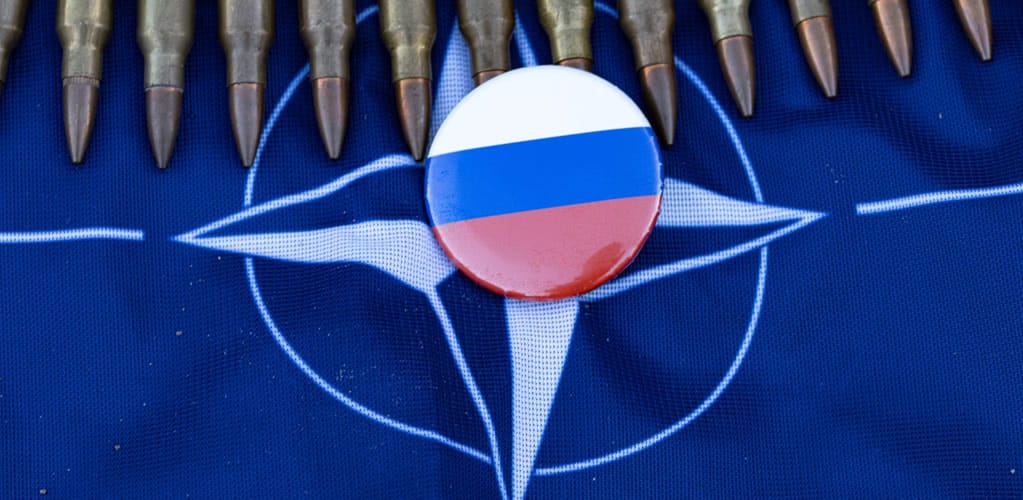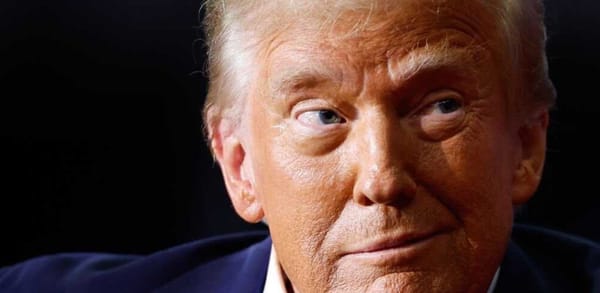Russia’s Baltic neighbours to create massive border defences as Trump continues undermining Nato
Donald Trump’s remarks on NATO, Ukraine aid, and Article 5 concern the Baltic States, fearing Russian aggression. Despite bolstering defences, their small populations make them vulnerable to Russian expansion, especially with potential US disengagement.

Donald Trump’s remarks on NATO, Ukraine aid, and Article 5 concern the Baltic States, fearing Russian aggression. Despite bolstering defences, their small populations make them vulnerable to Russian expansion, especially with potential US disengagement.
W ith Donald Trump leading in many of the polls for the upcoming US presidential election, his comments about global security and foreign policy have to be taken seriously.
In February, Trump flippantly remarked that he would encourage Russia to do whatever it wanted to Nato states that failed to pay their bills. In a follow-up interview on GB News this week he warned allies “not to take advantage” of the US.
“One of the presidents of a big country stood up and said, ‘Well, sir, if we don’t pay and we’re attacked by Russia, will you protect us?’
“I said, ‘You didn’t pay, you’re delinquent. No, I would not protect you. In fact, I would encourage them to do whatever the hell they want. You got to pay. You got to pay your bills.”
— Donald Trump, 10 February 2024
Nowhere is this causing more concern than for the countries in the Baltic states – Lithuania, Latvia and Estonia.
— The Baltic States.
Not only does Trump, sometimes, say he wants to halt all US military aid to Ukraine, but Trump wants to undercut article 5 of Nato’s treaty – the principle of collective defence – something that has become increasingly important in the wake of Russia’s aggression. British military sources are worried that Trump’s remarks will strengthen Putin’s resolve over Ukraine, and could result in him advancing on even more territory.
Even before Trump emerged on the US political scene, the Baltic countries have been especially concerned about Russia’s growing ambitions. They have, after all, been invaded and occupied by Russia before, in 1940, and then forced to become part of the Soviet Union. There’s plenty of people who can still remember life in the Soviet Union.
Since Russia’s annexation of Crimea in 2014, the Baltic states have been the loudest voices sounding the alarm about the existential threat posed by Russia, and all three countries increased their military spending to more than 2% of their GDP, and recently agreed to raise it to 3%.
Building shared defences
Amid growing security concerns, the defence ministers in Latvia, Lithuania and Estonia also agreed in January to set up a common Baltic defence zone on their borders with Russia and Belarus. This would consist of building physical defensive structures such as bunkers.
Estonia will begin construction of 600 bunkers in early 2025. The nations will also cooperate in developing missile artillery, and ensuring that their equipment, ammunition and manpower is updated.
Estonia has also doubled the size of its territorial defence force to 20,000 people, while Latvia reintroduced conscription in 2023 after becoming the only Baltic state to stop mandatory military service in 2006.
Latvia also plans to double the size of its armed forces to 61,000 by the year 2032. Meanwhile, Lithuania has made an agreement with Germany to allow a permanent brigade of 4,800 of its troops to be combat-ready on the Russian border by 2027.
Putin’s pledge to Russian speakers
But given that Russia borders 14 countries, why are the Baltic states especially concerned about their security? In addition to being geographically close, a notable number of ethnic Russians live in the Baltic countries (5% in Lithuania; 25% in Estonia and 36% in Latvia). In the eastern Estonian city of Narva, 95.7% of the population are native Russian speakers and 87.7% are ethnic Russians.
This matters as Putin has argued that having substantial numbers of ethnic Russians living outside of Russia, due to the “catastrophic” dissolution of the Soviet Union, represents a “humanitarian disaster of epic proportions” as it left Russians cut off from “their motherland”. Putin has vowed to actively protect all “Russians” living abroad.
In particular, Putin has said he was concerned about how ethnic Russians are being treated in the Baltics, remarking that the deportation of ethnic Russians (most notably in Latvia where there have been recent changes to its immigration laws), poses a threat to Russian national security.
The Kremlin has also protested the demolition of Soviet monuments in the Baltics, placing Estonia’s prime minister, Kaja Kallas, on its wanted list for doing so.
But these claims about wanting to protect Russians abroad, are really just a pretext to justify escalation with the Baltics, which will test Nato’s alliance and destabilise the organisation. So it’s not just important that there are ethnic Russians living there – there are strategic reasons as well that make them an easy target.
Even with the Baltic countries strengthening their troop numbers, Russia currently has 1.32 million active military personnel, and two million active reserve. Combined, this is greater than Lithuania’s entire population of 2.8 million people, and far greater than Estonia and Latvia which have populations of 1.3 million and 1.8 million people, respectively.
For Lithuania, which borders Belarus and Russian-run mini-state Kaliningrad, there are concerns that it could be taken over first by Russian forces, which would then physically isolate Lithuania from the rest of the Baltics. The Kaliningrad region has become increasingly militarised in recent years, with Iskander ballistic missiles and S-400 systems installed. With Trump suggesting he would weaken the US’s commitment to Nato if elected, there won’t be much of a deterrent for Putin to grab low-hanging fruit.
The current Nato response force consists of approximately 40,000 troops, with plans to upgrade to 300,000 troops. But quick-reaction units could still be too slow to protect the Baltics from Russian forces as, ironically, moving large units, vehicles and ammunition across borders is bureaucratic and takes time. It would be important to have excellent intelligence and to move quickly, something that will be made more difficult with the US potentially opting out of its commitments.
Though Russia has plunged much of its resources into winning the Ukraine war, Putin still aims to expand Russian sovereignty across the post-Soviet states and to effectively dismantle Nato, something that Trump takes no issue with. As Russia has been ramping up its war machine, the Baltic states firmly believe that Russian aggression will not stop at Ukraine, and that they could be next.

Sources:
▪ This piece was originally published in The Conversation and re-published in PUBLIC SQUARE UK on 22 March 2024. | The author writes in a personal capacity.
▪ Cover: Unsplash/Marek Studzinski. (Licensed under a Creative Commons Attribution-ShareAlike 4.0 International License.)






[Read our Comments Guidelines]